Labels for Safety, Visuals and Facility ID Desktop Printers
Labels for Product, Wire and Lab ID Benchtop Printers
Labels for Safety, Visuals and Facility ID Desktop Printers
Labels for Product, Wire and Lab ID Benchtop Printers
Safety and Facility ID Desktop Printers
Product, Wire and Lab ID Benchtop Printers
Barcode Scanner and Printer Kits
Barcode Scanner and Printer Kits
PaintStripe Floor Marking Stencils
Valve Lockouts & Hose Lockouts
Group Lock Boxes & Permit Control
Brady Safety Lockout Tagout Services
Pipe Marker Accessories & Mounting Brackets
Maintenance and Production Tags
Calculators and Assessment Tools
Product Finders and Data Sheets
your guide to server rack, ethernet & patch panel cable organization
It’s easy to understand why cable organization gets overlooked. Often hidden away, cable bundles don’t attract attention … unless there’s a problem. Which, if there is, may be because they look like this:

Said plainly, the term hot mess should NEVER describe your network cable management strategy. Rather, cable organization should be part of your installation process, not something you do when cables start looking messy. Figuring out WHY we need organization and HOW to improve it is a great place to start.
Rapidly evolving technology and more investment in digital strategies have put pressure on the cabling industry. If you’re a network installer, engineer or IT technician, you’re busy installing, updating and performing maintenance — under tight deadlines and strict regulations. But a rushed or unorganized install could be a red flag for future issues.
Besides looking unsightly, a tangled bunch of cables in a server room can jeopardize a network. Outages, downed systems, data transmission errors — even overheating or fires can occur with power cables. Problems that will need to be fixed sooner than later, so why risk it? Taking a small amount of time to plan an organized cable system is worth it — to everyone.

A well-organized cable system offers an abundance of benefits, safety being the most important. But better management of data and power cabling has other perks, too.


Much more than just a neat and professional appearance, better cable management offers a safe and easy way to maintain and service a network. Less guesswork means you’re more efficient, replacing cables in minutes — not hours.
Cable management is easier than you think. Start planning for it by thinking about what’s needed today. Then, consider future growth. Remember, organizing is part of the process, not an add‑on task at the end. Keep your network cable management at its best with these top 10 tips:
This prevents outages through a reliable system of identification.
A well-documented infrastructure is easier to add onto, upgrade, change and maintain.
Printed labels that use a system are easy to identify and locate.
Bundling cables creates space where air can circulate to cool cables, avoiding excessive heat.
Example: keep power cables apart from data cables. This can prevent electromagnetic interference, which may interrupt circuits or cause data to be lost.
The #1 reason for messy cabling. Avoid excessive cabling (more than 12 inches).
These won’t bind or damage cables and provide a nice, neat way to view bundles.
This can cause cable damage, impacting performance.
Technicians shouldn’t guess a cable’s function. It wastes time and could cause issues.
Install new cables by placing them in cable trays, baskets and ladders.
To avoid “spaghetti cabling” and lost data caused by damaged cables, you’ll want to use a number of these cable management tools. They help clean up the clutter in server rooms, network racks and in the routes cables travel, improving safety and boosting the integrity of your entire network.
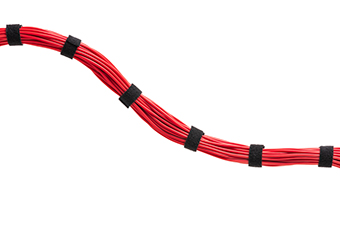
Organize network cables with adjustable, reusable and various sized VELCRO® ONE‑WRAP® Rolls.
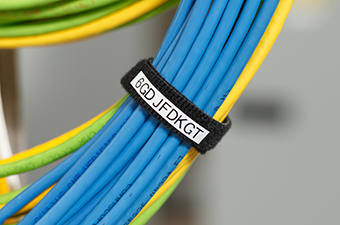
This revolutionary cable ID product features VELCRO® Brand Hook and affixes easily to VELCRO® ONE‑WRAP® Rolls.
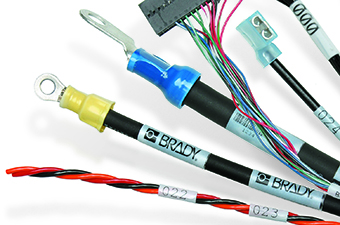
Wire and cable labeling for any application with wrap-around, heat-shrink and self-laminating industrial-grade labels.
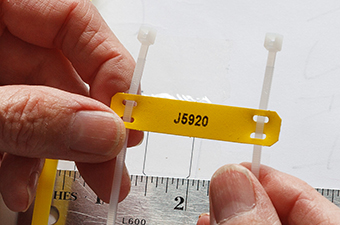
Ties come in a variety of colors and materials to organize and bind, while cable mounts secure to walls and panels.
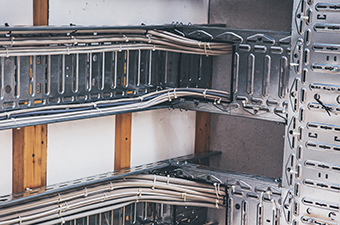
Cable Raceways, which are secured to floors and walls, fully enclose cables, protecting them from dust, moisture and heat.
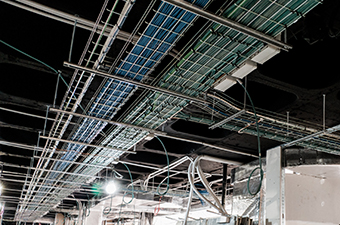
Typically made of solid or wire mesh, cable trays provide support for cables and raceways. Mount to walls, ceilings or floors.
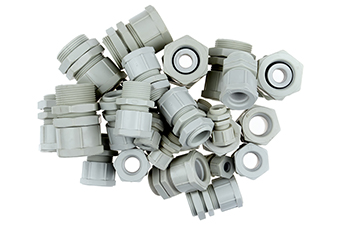
Cord grips, or glands, secure cable ends to equipment and prevent damage caused by strain or excessive bending.
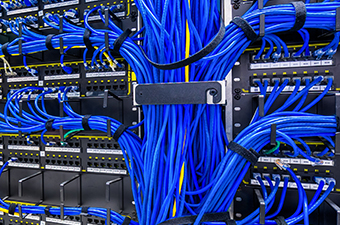
Horizontal cable managers draw cables away from equipment then feed into vertical cable managers which provide a vertical pathway.
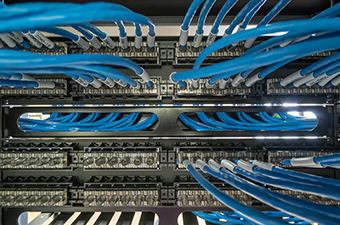
Patch panels are used to bundle multiple network ports together such as electronics, communication and electrical systems.
As the world becomes more connected, one thing is clear: better cable management is essential for better network performance. Use these tips and tools to improve the way you organize network cables, and forgo spaghetti cabling forever. Picking the right wire marker or cable label is important. Network users everywhere will thank you.

Improving electrical safety, one wire at time by identifying cables using color.
Learn More
Grip, grab and identify with BradyGrip® Print-on Hook Material featuring VELCRO® Brand Hook.
Learn More